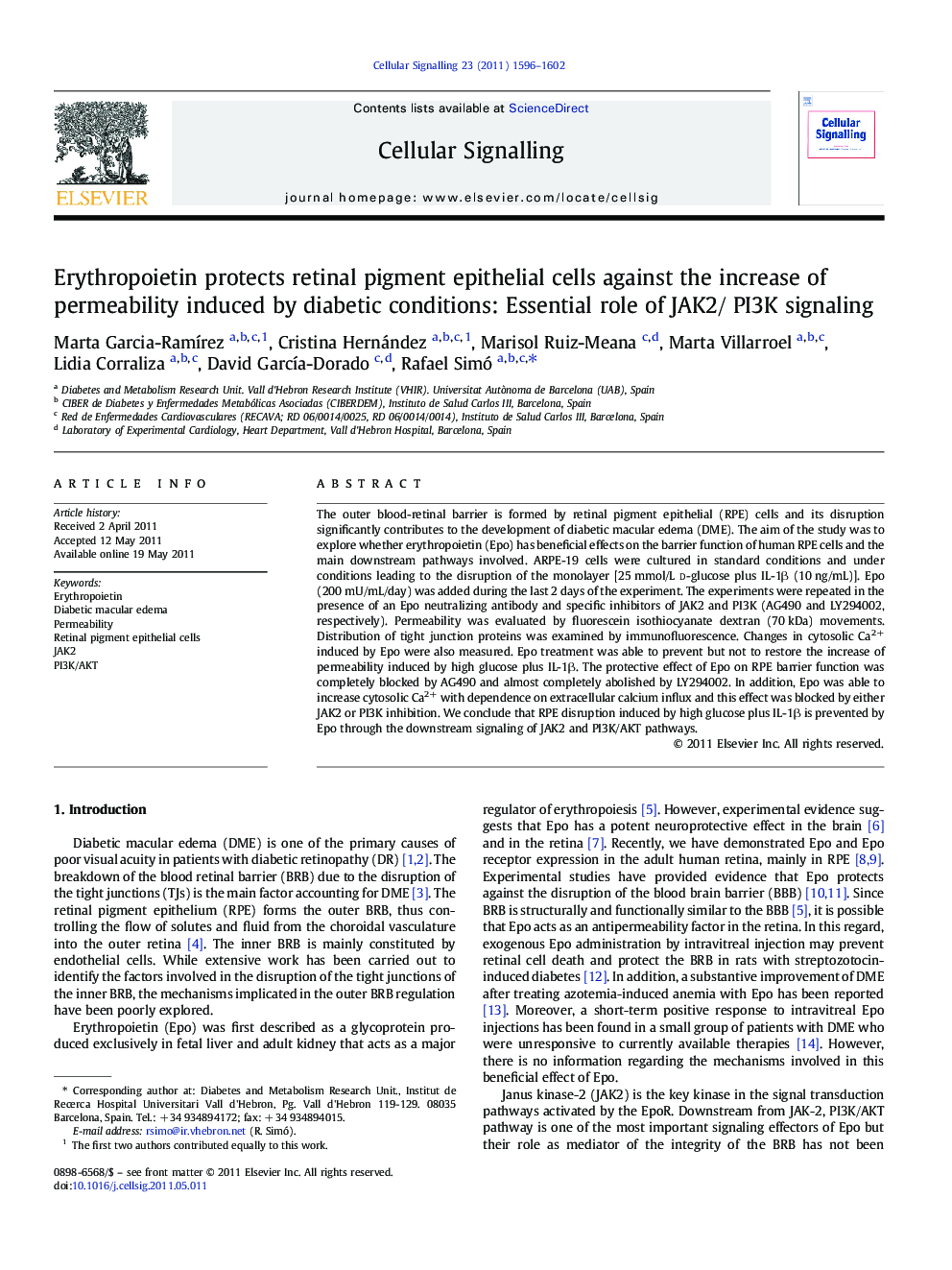| Article ID | Journal | Published Year | Pages | File Type |
|---|---|---|---|---|
| 1964743 | Cellular Signalling | 2011 | 7 Pages |
The outer blood-retinal barrier is formed by retinal pigment epithelial (RPE) cells and its disruption significantly contributes to the development of diabetic macular edema (DME). The aim of the study was to explore whether erythropoietin (Epo) has beneficial effects on the barrier function of human RPE cells and the main downstream pathways involved. ARPE-19 cells were cultured in standard conditions and under conditions leading to the disruption of the monolayer [25 mmol/L d-glucose plus IL-1β (10 ng/mL)]. Epo (200 mU/mL/day) was added during the last 2 days of the experiment. The experiments were repeated in the presence of an Epo neutralizing antibody and specific inhibitors of JAK2 and PI3K (AG490 and LY294002, respectively). Permeability was evaluated by fluorescein isothiocyanate dextran (70 kDa) movements. Distribution of tight junction proteins was examined by immunofluorescence. Changes in cytosolic Ca2+ induced by Epo were also measured. Epo treatment was able to prevent but not to restore the increase of permeability induced by high glucose plus IL-1β. The protective effect of Epo on RPE barrier function was completely blocked by AG490 and almost completely abolished by LY294002. In addition, Epo was able to increase cytosolic Ca2+ with dependence on extracellular calcium influx and this effect was blocked by either JAK2 or PI3K inhibition. We conclude that RPE disruption induced by high glucose plus IL-1β is prevented by Epo through the downstream signaling of JAK2 and PI3K/AKT pathways.
